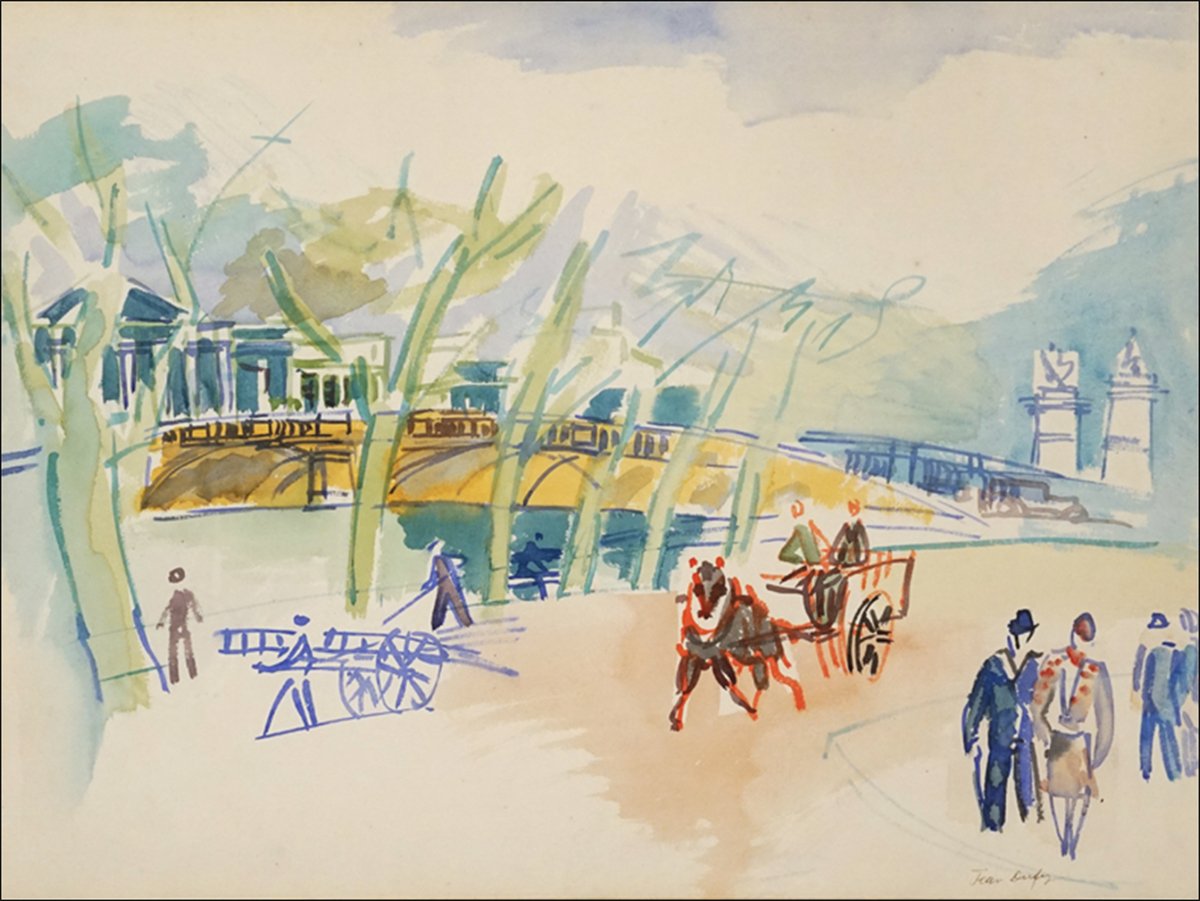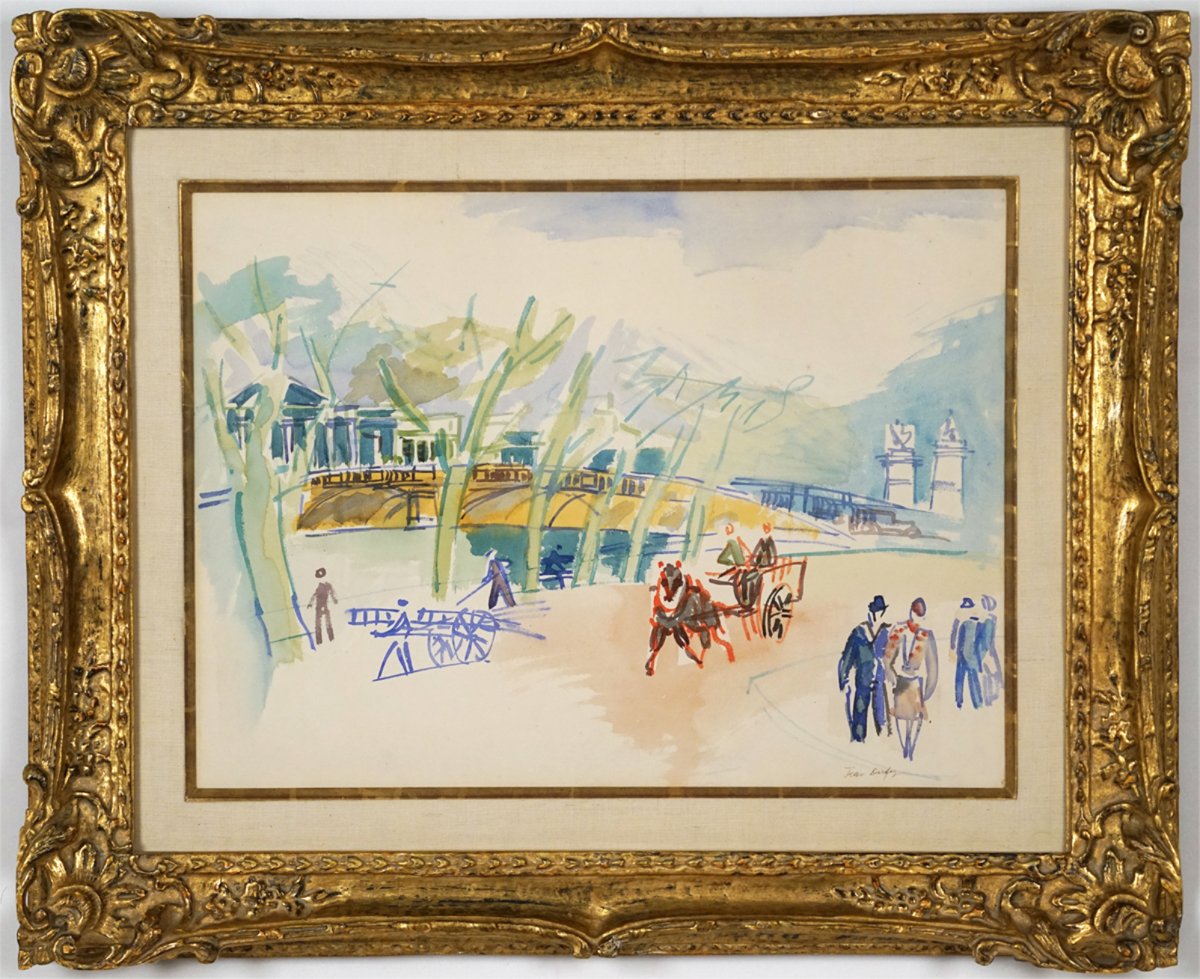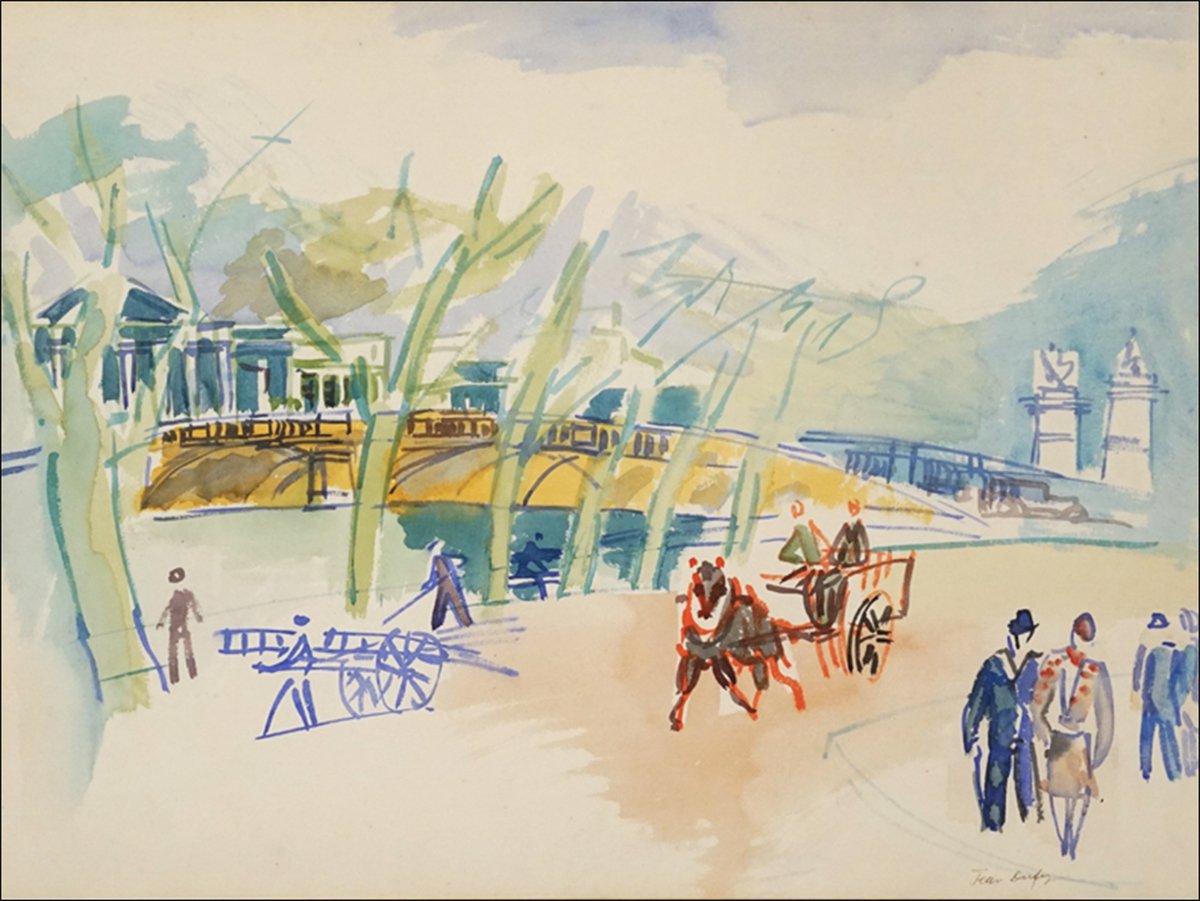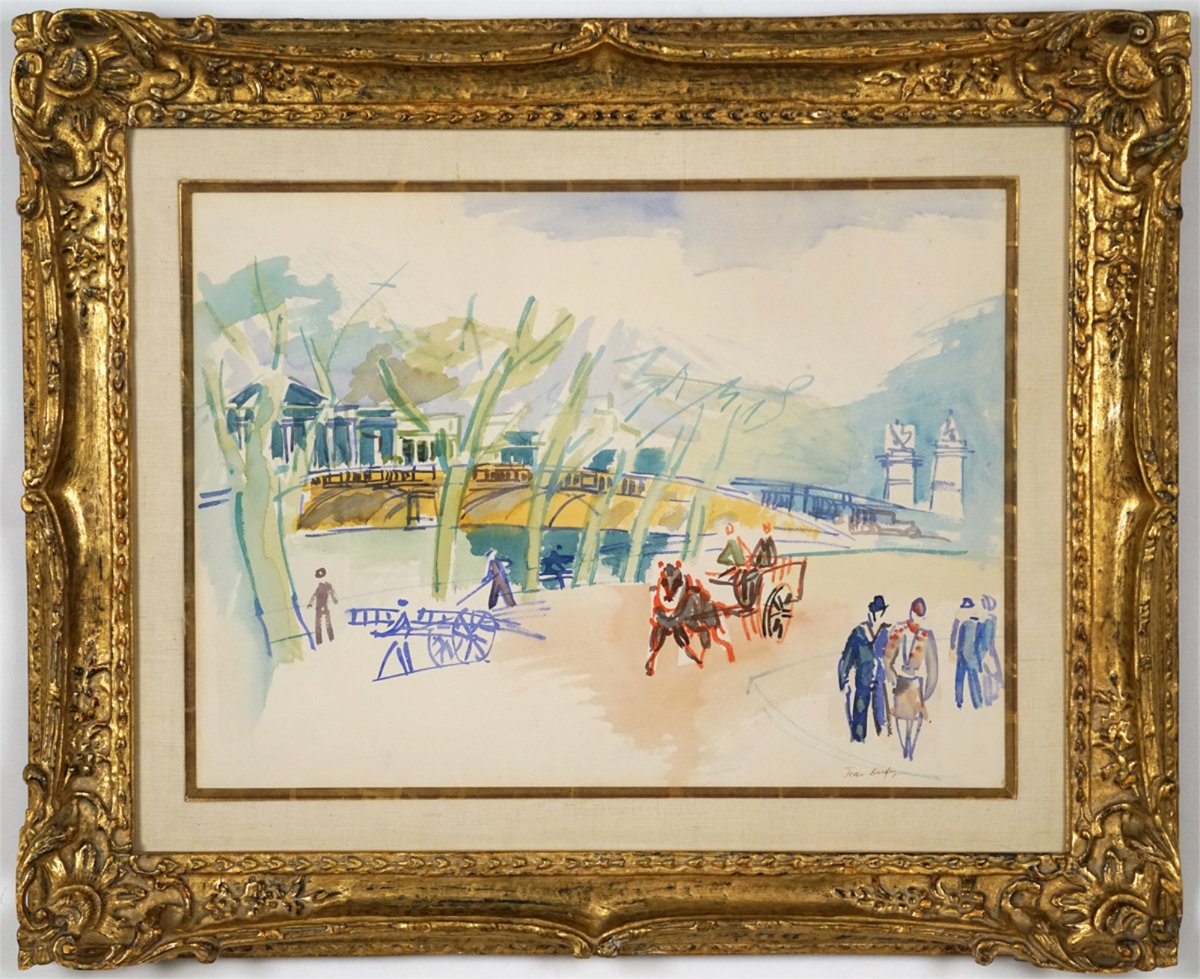Works on Paper
Jean Dufy
French, 1888-1964Au Bord de la Seine
Watercolor on paper18 by 24 ¼ in. Sight size 13 by 20 in. of image
Accompanied by a photo certificate from George Wiener of Wiener Gallery, dated March 26, 1970. We would like to thank Jacques Bailly for confirming the authenticity of this work, which will be included in the forthcoming catalogue raisonné Certificate No. 4685.
Signed bottom centerProvenance:
George Wiener of Wiener Gallery
Private Collection New York
Le Trianon Fine Art & Antiques
See Artist Bio below.
Jean Dufy
French, 1888-1964From LeHavre and an arts-oriented family of eleven children including the famous Raoul Dufy (1877-1953), Jean Dufy showed artistic ability from childhood. Throughout his future career, his older brother, Raoul, encouraged him. Jean not only did fine-art painting but painted theatre sets. To earn money, he was a clerk for an overseas import business and even served as secretary on a transatlantic liner, La Savoie,which traveled between New York and Le Havre.
In these jobs, Dufy did much walking and observing around the port of Le Havre, and also became fascinated with modernist ‘tradition breakers’ such as Henri Matisse and Pablo Picasso.
He became a student in Le Havre at the l’Ecole des Beaux Arts, and his teachers included Raoul and A.E. Othon Friesz. When Raoul moved on to Paris, Jean Dufy dropped out of the Ecole in Le Havre to follow his brother “who remained his true master for the rest of his life.” (Kodner) However, between these moves, he also served in the military from 1910 to 1912. For the next two years, living in Paris, he became associated with Cubist painters Picasso as well as Georges Braque and poet Guillame Apollinaire.
By 1914, he was exhibiting his early watercolors, “muted tones and somber browns, blues, and reds” mingling “with the hatching technique he inherited from Cézanne by way of his brother Raoul Dufy.” The venue was the Berthe Weill Gallery. However, that same year, he was drafted for additional military service and was a soldier on horseback. Being stationed throughout France, he painted many landscape scenes including in the Vosges region where he was treated for war wounds.
Because of this close association, Jean Dufy’s work, much of it in ink and watercolor, is often compared to that of his brother. Like Raoul, he chose Parisien subjects, “country scenes, circuses, horse races, stages and orchestras. . . . Raoul Dufy often dissected each of the elements that he used in his compositions, often with humor or tenderness, if not with acuteness. Jean, on the other hand, was more sensitive to the entire panorama of the scene represented, i.e. the particularity, the individuality, the ‘hands on’. (Kodner)
Jean Dufy in 1916 worked briefly with his brother in a studio doing textile painting, and then began what became a major component of his career for the next 30 years—-porcelain decoration for Haviland in Limoges, France. For skillful and creative execution of animal and floral designs, he received the International Exhibition of Decorative Arts gold medal in 1925 for a set he designed titled “Chateau de France”.
By 1920, he was a member of the Salon d’Automne, where he exhibited in 1920, 1923, 1924, 1927 and 1932. Also bringing him increasing public attention was gallery representation in Paris at the Galerie Bing and in New York at Balzac and Peris Galleries. In 1937, he helped his brother, Raoul, with the completion of his assignment to oversee the decoration of the Electric Pavillion for the World’s Fair. Together they did a mural, 600 meters in size, to celebrate electricity.
He established residency in Montmartre, living near the artist, Georges Braque. In addition to painting and decorative arts, Jean Dufy was a musician, playing the classical guitar, and was a jazz enthusiast, which some critics have linked to his rhythmic, fluid painting style. The interest in music likely is linked to his father, whose career was accounting for a metallurgy company and who was an amateur musician. The love of music of Dufy transferred to his artwork, and he did many brightly colored depictions of musicians in orchestra scenes and piano players. Among his associates were prominent avant-garde composers whose names remain famous such as Francis Poulenc, Arthur Honegger and Eric Satie.
Finding many painting subjects, Jean Dufy traveled extensively in the 1950s, the last decade of his life. He returned often to his hometown of Le Havre and to his mother’s birthplace of Honfleur, as well as to many other locations in Europe and to North Africa. However, judging by his many scenes of Paris, it was the location that for him was most fascinating: “the streets, the horse-drawn carriages, the Eiffel Tower, the sky, and the Seine.”





